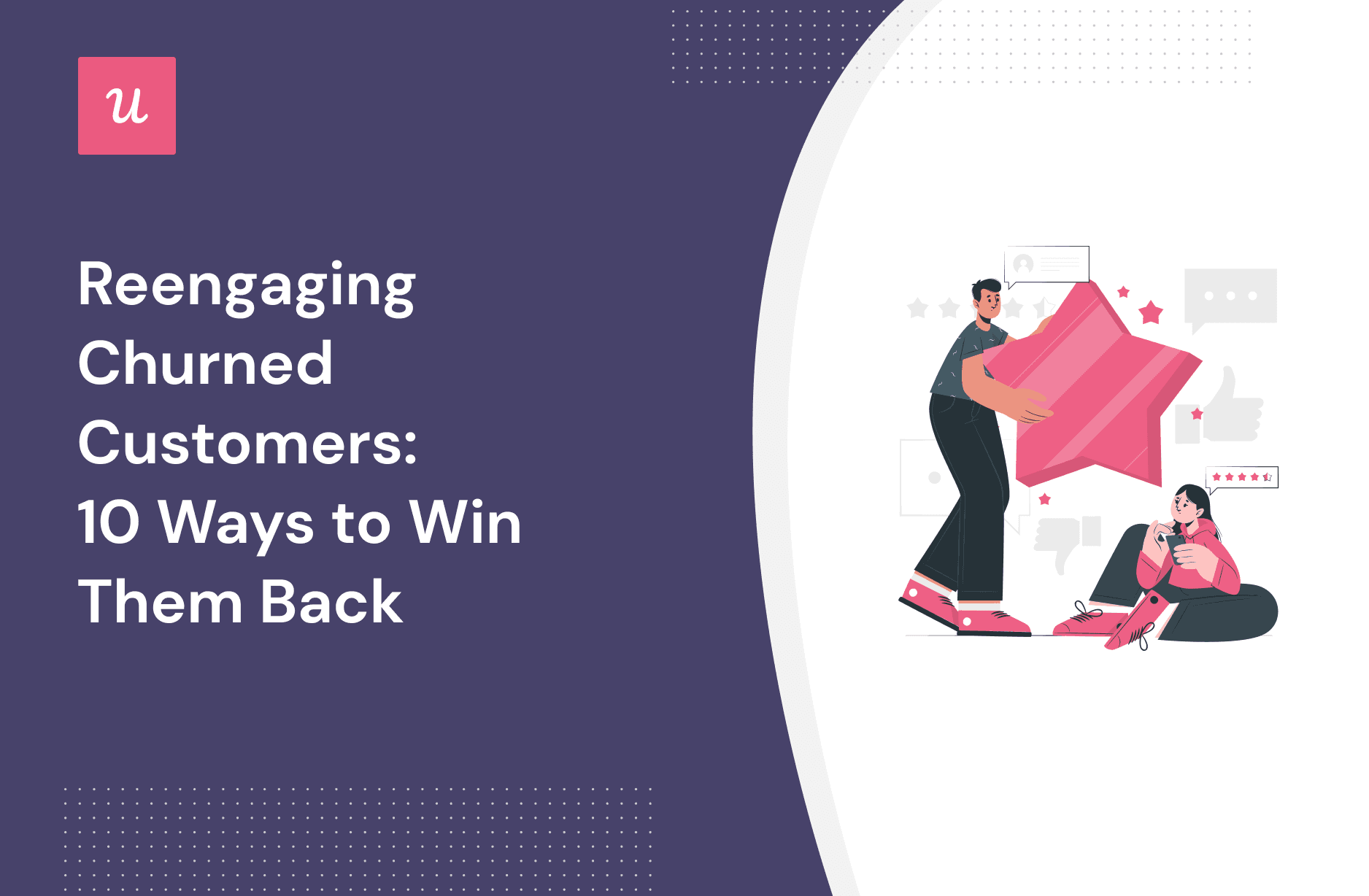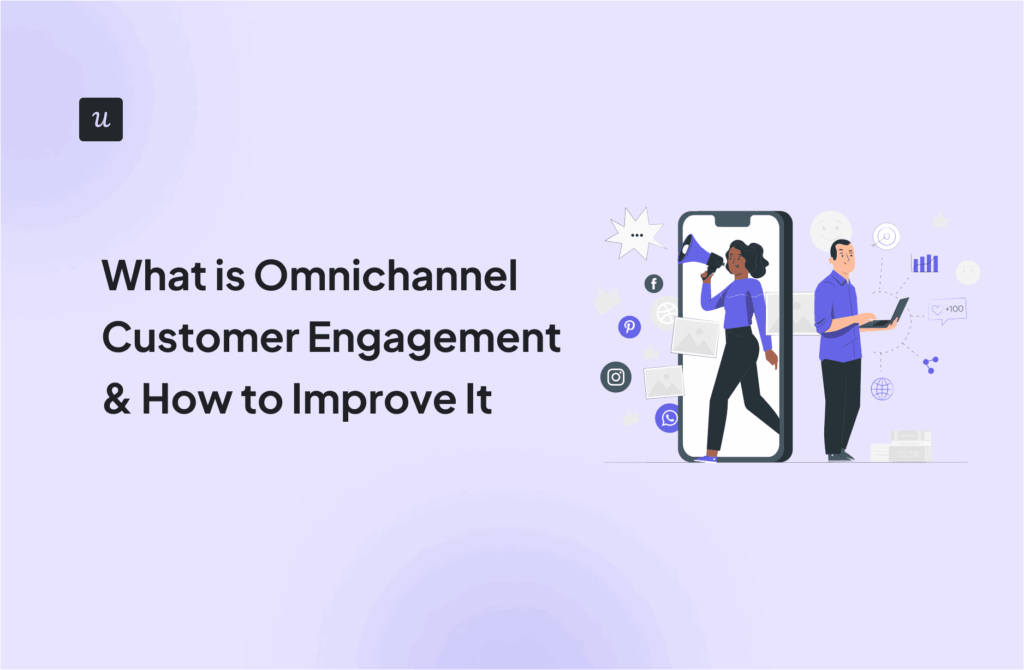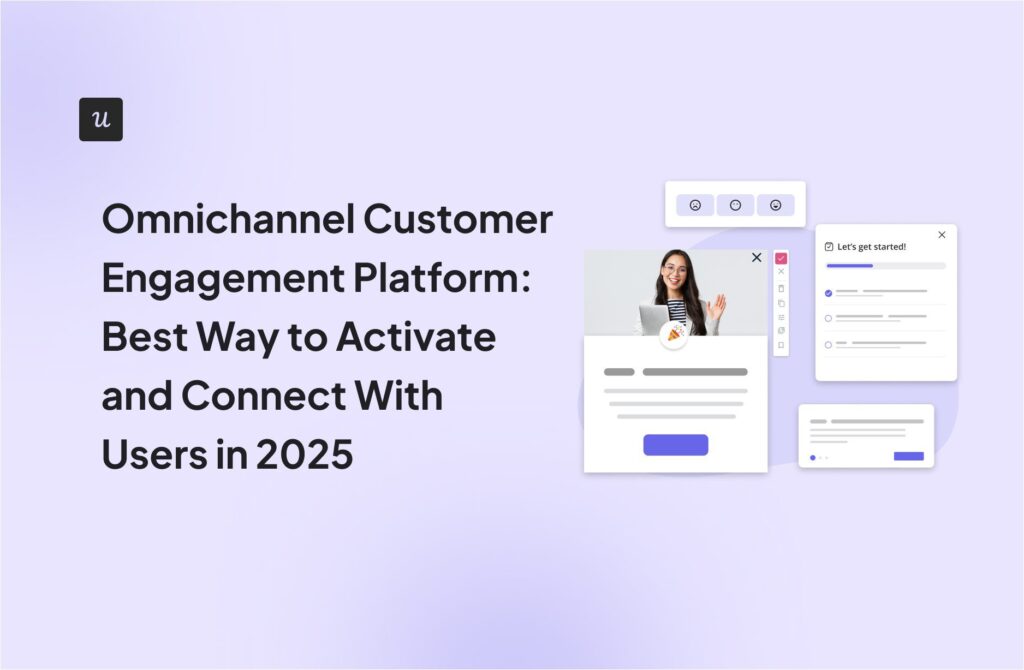
Did you know reengaging churned customers is possible?
Companies lose revenue because they mistakenly think churned users are gone forever. It’s true that you can’t win back everyone that goes radio silent or deactivates their accounts, but the right strategy will help you regain many of them.
This article shows the common reasons for churn, outlines ten ways to get your users back, and the right engagement software to use.
Get The Insights!
The fastest way to learn about Product Growth, Management & Trends.
Summary of reengaging churned customers
- A churned customer is someone who stopped using your product after a while.
- Churn can be both voluntary and involuntary.
Reasons for churn:
- Poor onboarding experience
- Unresponsive customer support
- Lack of connection
- A high churn rate leads to low customer lifetime value and a negative brand image.
10 realistic ways to reengage customers:
- Find out the reason for churn. This is the first step. It’s hard to regain customers without knowing why they left in the first place.
- Focus on the right user group. Use feedback surveys to find reasons for churn, then segment users and focus on the groups most likely to return.
- Address their concerns. Once the feedback is received and classification is done, plan how to approach customers with the best solutions to their needs. Aim to establish direct contact when doing this.
- Stay in touch with a newsletter. Send regular product and industry news, plus expert tips to help your existing customers get better at their jobs.
- Send personalized content. Target each churn segment with content tailored to their interests, pain points, motivation, etc.
- Plan retargeting campaigns. Dig into your customer database and retarget users based on their previous behaviors.
- Use push notifications. Properly implemented, push notifications are a great way to create engagement loops that keep users hooked to your product.
- Utilize social media. Your customers visit social media daily, even if they no longer use your product. That makes it a good opportunity to connect with them through their favorite social media channels.
- Create a community. This reengagement strategy will attract new users and draw the attention of lost customers.
- Give an incentive to return. Sometimes, a small push might be all a customer needs to return. Offer rewards, discounts, gifts, loyalty points, etc.
- Customer reengagement software to consider: Userpilot, Drip, Hubspot.
Who is a churned customer?
A churned customer is someone who stopped using your product after a while. Customer churn happens when a user suddenly becomes inactive or deactivates their accounts.
Churn can sometimes be involuntary—where users leave your platform due to payment issues, system errors, etc. However, this article focuses on identifying and re-engaging customers that churned on their own will.
That said…
Why do customers churn?
You can’t effectively re-engage churned users without analyzing the underlying reason for churn. Even if you successfully avoid that step and find a way to bring back churned users, they will still leave after a while if the root cause isn’t addressed.
It’s like trying to cure your pets without knowing the cause of their disease. Some random drugs might work, but it’s no guarantee the symptoms won’t resurface.
Zonka created a study to identify the major reasons for churn. Here’s what they found:

Let’s discuss the top three.
Poor onboarding experience
The onboarding experience plays a major role in determining whether or not customers continue with a business. There are two reasons for this:
- Onboarding is where you prove to the customer that your product can solve their problems. They’ve seen your fancy advertising, but the onboarding experience tells them if you were sugarcoating.
- The onboarding process familiarizes users with the tool and shows them how to use it.
To the user, poor onboarding is when they didn’t get the expected value from your tool or weren’t properly taught how to maximize your features. Both situations lead to churn.
Good onboarding is a multi-step process that involves a lot of nurturing. Here’s what the typical onboarding process looks like:

Unresponsive customer support
One of the quickest ways to lose a user to churn is to leave them stranded when they need help. It’s even more frustrating when customers have to wait several days for their queries to get to the right person.
Solve the unresponsiveness problem by prioritizing customer support. Make it easy for customers to contact the right department when issues arise, rather than making the customer wait.
You can go a step further to provide proactive support. This simply means making help available through help centers, chatbots, in-app guides, etc., that customers can visit at their convenience.
It’s a win-win: your support tickets will reduce since most customer service is simply closing the knowledge gap. Proactive support also means you can afford to have fewer support agents while delivering stellar customer service.
Lack of connection
Some companies make the mistake of leaving customers on their own after the initial interactions during onboarding. This results in weak customer relationships and is one of the primary reasons for churn.
Think about it: how easy is it to end a relationship with someone you speak to weekly compared to another person you only meet twice a year? It’s not a tough call. Frequent communication solidifies relationships, and connections begin to die when there’s weak communication.
A customer relationship doesn’t have the same strong bond as your relationship with your best friend. But still, ensure you connect often with existing customers to keep your ties going.
This can be anything from communicating upcoming changes to asking how they feel about your brand. Speaking of brand perception, an occasional NPS, CES, or CSAT survey is a great way to collect customer feedback quickly. These surveys will show you if customers are satisfied or at risk of churn.

How does customer churn affect your business?
Every business experiences churn.
The average churn rate for SaaS is around 5-7% per annum (it can be more or less, depending on how you calculate your churn rate and where you are on the growth curve).
High churn rates have adverse effects. It’s cheaper and easier to retain existing customers than acquire new ones. Churn means you keep burning cash to get new customers that aren’t staying long enough to justify the expense. In other words, high CAC, low LTV.
It also affects your brand image. Unhappy users often leave public feedback or reviews that might discourage prospects from trying you out.
10 realistic ways to reengage churned customers
As mentioned in the intro, customer churn isn’t the end of the relationship.
With the right engagement strategy, it’s possible to re-engage churned users and even turn them into loyal fans. This section shows you ten simple ways to accomplish that.
1. Find out the reason for churn
Assumptions or vague reasons won’t be of much help to you. Try to get real, specific answers from customers through feedback surveys.
Even dissatisfied clients like sharing their opinion, so use this opportunity. Through your surveys, you might find that the reasons for churn are stuff you can easily fix and bring back users. Otherwise, you’ll still get valuable insight into your product from a user’s point of view.
Your feedback surveys should be short but not generic. Be sure to ask the right questions that will actually reveal the real issues.

2. Focus on the right user group
Concentrate your efforts on the right segment to not waste time or energy. Use the results from the collected feedback to identify users you have a better chance with and focus on them.
Pull out user data and classify churned customers according to their journey stage, most-used features, reasons for churn, budget, etc. This will make it easier to engage them contextually.

3. Address their concerns
Once the feedback is received and classification is done, plan how to approach customers with the best solutions to their needs.
Begin by establishing direct contact through email, phone calls, social media, or other channels they use. It will show that you value their opinion enough to reach out to them directly.
But don’t go into it blindly. Have a plan on how you can help with their problems. Knowing the four pain point classes will help:
- Process pain points: Customers struggle to accomplish tasks on the platform because it’s too complicated or unclear.
- Financial pain points: Customers feel what they’re spending on your app doesn’t match the value they’re getting.
- Support pain points: Bad customer service that leaves customers frustrated.
- Productivity pain points: This pain point comes from customers feeling like they aren’t using the product to its full potential.

4. Stay in touch with a newsletter
Recall we mentioned regular communication as a good way to keep the customer relationship alive. An active newsletter helps you do just that!
Having a newsletter that delivers helpful, relevant content will always keep your brand top of mind.
Of course, be customer focused. Don’t bore users with constant news about your product. Include industry updates, professional tips, etc., that you know customers will appreciate even if they weren’t signed up for your tool.

5. Send personalized content
As discussed, churned customers can and should be classified into distinct segments. Target each segment with content tailored to their interests, pain points, motivations, etc.
Understanding user adoption stages is crucial to adjust your approach. Here’s a flywheel showing the different stages in the user adoption cycle:

6. Plan retargeting campaigns
Retargeting uses user activity to reconnect with past customers who have used or interacted with your product in any way. For example, this is done through web cookies to retarget users that have previously visited a website.
You need user behavior data for proper retargeting. And that’s where tools like Userpilot come in. Our software allows you to track in-app activity, segment, and retarget accordingly.

7. Use push notifications
Push notifications help to remind users of your platform. Used well and not overdone, they’re a great way to create engagement loops that keep users hooked to your product.
You can send updates on new features, remind users of unfinished projects, offer points and discounts, etc. Many social media platforms do this to get the user’s attention after a period of inactivity and pull them back into their app. Instagram is a good example:

Ensure your push notifications are valuable and less frequent, or users might get infuriated.
8. Utilize social media
Your customers visit social media daily, even if they no longer use your product. That makes it a good opportunity to connect with them.
Reach out to users with regular updates, news, tips, and any other content that will interest them—whether it’s in-depth case studies or memes.
Besides helping to reengage inactive users, social media also helps spread WoM through social sharing.
9. Create a community
Everyone who has used your product at some point has a shared interest or challenge (or both). Capitalize on this by creating a community of like-minded people around your brand.
The community can be private or public, free or behind a paywall—it depends on you and your audience. You can use social media groups, email newsletters, forums, webinars, or offline events.
A strong community will attract new users and draw the attention of past customers. That’s not to mention the fact that community-led growth increases retention because people have extra reasons to stay with you.

10. Give an incentive to return
Sometimes a small push might be all a customer needs to return. Offer rewards, discounts, gifts, points, etc., depending on what you think will work best for your audience.
Here’s a successful example from Typeform:

Best software for re-engaging churned customers
There are many customer re-engagement tools in the market, each with its uniqueness. Below are three of the best tools and how they can help you.
Userpilot
Our software has robust features for building in-app flows for new customers and returning ones. These flows will ease returning customers into the app and quickly show them how to derive value with your key features.
Userpilot also provides in-app user behavior analytics to use for content and campaign personalization.
Additionally, with its new mobile features, Userpilot now empowers you to onboard and engage mobile app users by creating personalized messaging, push notifications, and surveys directly within their app experience.
And as seen earlier, you can use our software to create contextual feedback surveys and segment users based on different factors.

Drip
Drip is a marketing automation software that has rich analytics and also enables user segmentation. You can use the platform to build email campaigns, popups, and online forms to engage users.

Hubspot
Hubspot is an all-in-one platform offering marketing automation and analytics. You can also use the software to manage contacts, create pipelines, track deals, and collaborate across different teams.
Its content management side enables you to plan and distribute content that educates and engages your audience.

Conclusion
Customers are the bedrock of any business. As a SaaS company, the key to driving revenue is retaining customers and ensuring they find your product valuable enough to keep upgrading. That’s why you must fight churn with all you’ve got.
This article has shown you the main reasons for churn and ten ways to win back customers. Go ahead and implement the lessons that stood out to you.
You can get many things done manually, but specialized software will help in re-engaging churned customers faster. Make Userpilot your secret weapon for reducing customer and revenue churn today! Book a demo to discuss your needs and see how we can help.





